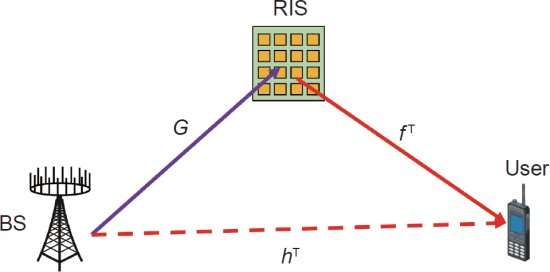The promise and challenge of reconfigurable intelligent surfaces

The world is more connected than ever before, with reliable and consistent wireless communications transmitting to and from individual users—but the technology is evolving to something even better, according to an international research team.
A reconfigurable intelligent surface (RIS) is an array of dynamic yet passive elements that can be individually and independently controlled to precisely direct a transmission signal from a base station to a mobile user.
"The RIS is an emerging technology, which will hopefully bring a new revolution in wireless communications," said paper author Muhammad Siddiqi, a graduate student in electronics engineering at Tsinghua University. "RIS has gained enormous attention in recent years by researchers of different communities, and therefore, several research papers have been published in this regard. However, there are still some important open problems that need to be solved."
In this paper, the researchers provide a comprehensive survey on the emerging RIS technology and discuss key aspects from existing research, including challenges. From detailing RIS models to probing basic transmission principles in the context of RIS to examining prototyped RIS-aided communication systems, the researchers emphasize the promise of RIS while simultaneously stressing caution.
"To provide deep insight on the individual topics, we have given some examples to show the importance of RIS technology in future wireless systems," said paper author Talha Mir, assistant professor of electronic engineering, Balochistan University of Information Technology, Engineering, and Management Sciences. "We also highlighted the key challenges and provided some opportunities to guide readers for future research trends in the field of RIS-aided communications."
For example, RISs differ from conventional antenna arrays because they do not perform complex signal processing on incoming transmissions to send them to the intended receiver. Instead, they simply reflect the transmitted signal from the base station to the mobile user. The individual cell units of the RIS are passive unless one needs to be adjusted to achieve the correct angle for a particular signal. Even that adjustment, however, does not require complex processing.
"RIS technology does not incur additional noise while retransmitting the incident wave, which is a substantially unique feature from conventional wireless communication systems," Siddiqi said. "That's one new opportunity RISs bring to researchers in the fields of information theory, electromagnetics, wireless communications and signal processing."
While the opportunities exist, so do the challenges, the researchers said. RIS may not add noise to a signal, but the best approach to estimating and transmitting along a channel remains debatable.
"The channel model of a RIS is still controversial, since some analytical results in existing papers have not been verified by experiments yet," Mir said. "We are not yet sure, among existing available models, which one will be the best choice for practical scenarios."
The researchers found the same cautious optimizing in several other areas of RIS research, including performance analysis and RIS implementation, among others.
"It is expected that RIS will be an important research topic in the years to come as it has the potential to create a new horizon in the field of wireless communications," Mir said. "We believe that RIS technology will become an integral part of future wireless communications, once we answer some important yet challenging questions."
The research was published in Intelligent and Converged Networks.
More information: Muhammad Zain Siddiqi et al, Reconfigurable intelligent surface-aided wireless communications: An overview, Intelligent and Converged Networks (2022). DOI: 10.23919/ICN.2022.0007



















